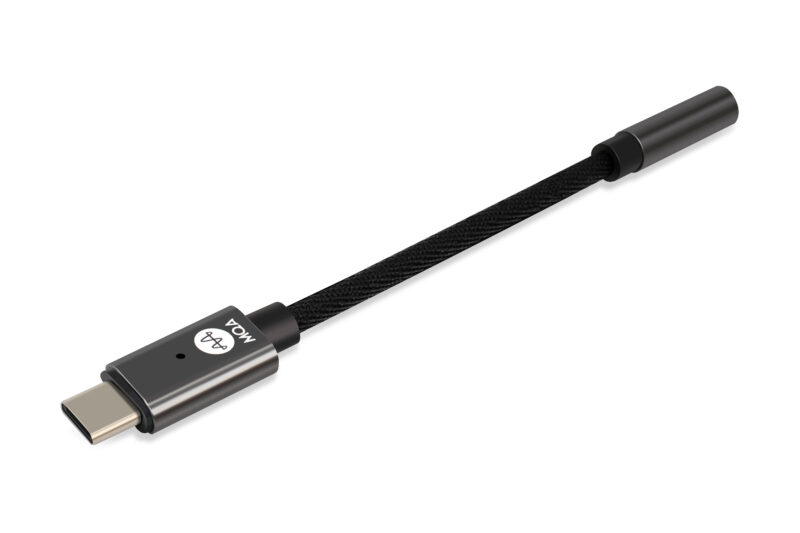 A couple of months back, I wrote a review of the extraordinary Zorloo Ztella, a tiny dongle DAC/AMP that had impressive sound and power.
A couple of months back, I wrote a review of the extraordinary Zorloo Ztella, a tiny dongle DAC/AMP that had impressive sound and power.
That review covered the $69 Ztella Standard version, which I liked a lot. But at the same time, I knew I had to check out the $99 Ztella MQA version at some point.
Well, my wish was granted! Today I’m reviewing the $99 Ztella with onboard MQA (Master Quality Authenticated) rendering, which lets you unlock Hi-Res MQA audio information encoded in select FLAC files. I also believe it’s still the smallest and lightest MQA DAC out there.
The $69 version of the Ztella is pretty capable, decoding PCM up to 384 Khz and Double Rate DSD (5.6 MHz). But the $99 MQA option opens up another avenue of Hi-Res Audio, whether it’s streaming “Tidal Masters” from TIDAL, or MQA files purchased elsewhere on the internet.
Depending on the source, you can get MQA audio files that duplicate the sound created in the studio.
I won’t break the Ztella down in full this go-round, if you want complete details of its build or operation, you should read my Ztella Standard Version review. What I will say is, both versions are lightweight, well-built, and are easy to use. Each one is also potent, capable of 2V output into headphones of 150 ohms and above.
Both the MQA and non-MQA versions of the Ztella are pretty much identical, except for an MQA logo on the former. The LED indicator still lights Blue for SD Audio (less than 48kHz) or Red for HD audio (greater than 48kHz), but on the MQA Version, it also lights up Magenta for MQA content.
The ESS Sabre DAC Chips used are also different, with the ES9270 included in the standard version, and the ES9281PRO installed in the MQA version. I wouldn’t read too much into this, except to understand that the ES9281PRO chip provides MQA decoding.

Listening to the Ztella MQA Version DAC/Headphone Amp:
If you’re buying the Ztella MQA version because you think the sound will be head and shoulders above the standard one, then you may be disappointed. Any differences in sound quality are very subtle, especially when listening to non-MQA material.
If there is an “ESS Sound” (I believe there is…others don’t), then both Ztellas have it. The sound is crisp and warm, with a slight emphasis on the high end. Emphasis may be putting it mildly. They can be bright on certain songs with brighter headphones, but with the right match, they can be magic.
Like I said in the first review, I love the Ztella (both versions) with the warm, laid back Meze 99 Classics headphones. The Ztella brings them alive with nice detail and depth, combined with excellent weight and accuracy in the low end.
I listened to a variety of music from TIDAL on my laptop, but you can also plug this DAC/Headphone Amp into your phone or tablet (it comes with a USB-C connection, but a Lighting adapter is available). It’s a quick and easy way to add a headphone jack or more power to your smartphone.

As I said before, when I listened to both Ztella versions with non-MQA tracks, there wasn’t much of a difference in the sound. But when I played some MQA or “Tidal Masters” tracks from TIDAL, there was a very delicate upgrade in the sound of the MQA version over the Standard one.
When I listened to “Just A Little Lovin” by Shelby Lynne, on the Ztella MQA Version, there was just a tad bit more texture to her vocal, and the timbre of the instruments was just a little more real compared to the Standard one. Again, it’s not an overwhelming difference, but I enjoyed the sound of MQA audio on the Ztella.
Conclusion:
To me, for an extra $34 bucks, the MQA Ztella is a no-brainer over the Standard Ztella if you like the sound of MQA music. Not to mention, I believe it’s still the smallest and lightest MQA DAC. That being said, if you don’t have the extra scratch, or you don’t care about MQA audio, you don’t lose much buying the cheaper model. They both have the nice build quality, and they both sound great.
Where To Buy:
Zorloo Website: Ztella Integrated USB-DAC Cable (MQA Version)

I’m an audio writer who started as a young audio salesman/consumer electronics professional back in the late 90s. That’s where I discovered the magic of 2-Channel sound. My thirst for great sound has led me on a delightful music quest that continues today.



Leave a Reply